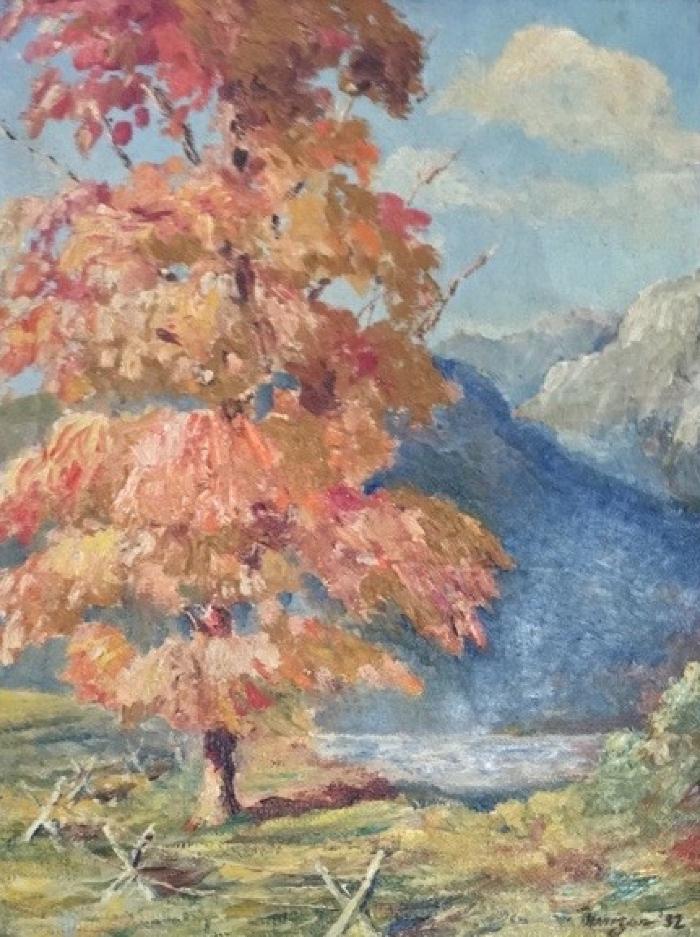The Bates Street neighborhood in southeast Grand Rapids where Armand grew up was “a hell-raising rough place” where bullies and con artists thrived (VanderMey, 2012). Vandals broke windows, littered lawns, and cat-called adversaries. As a rite of passage he shoplifted, but felt guilty afterward. He didn’t fit in with the little thieves and bullies. He didn’t even fit in with himself. Within his own family, too, he felt persistent rejection as he spent time on his art.
One day when Armand was sitting with a friend on a curb, a car lunged out of control, bounced up over the curb and crushed Armand’s legs. He was hospitalized for over ten weeks. Once again he found himself isolated. With little recourse to socialize, he took comfort in drawing. Noting his remarkable ability, a ward nurse surprised him one day with a new oil paint kit, a truly generous gift, especially during the Great Depression. It offered color to a child with a gray life.
At home Armand’s imagination was further kindled by his father’s tales of boyhood in the Old Country. Jasper described scenes in the huge ports of Rotterdam and Amsterdam in painterly detail with ships exporting potatoes to Britain and importing coal from Belgium. Looking back, Armand was convinced that his father could have become a gifted artist, but any desire he had was eroded by practical concerns. Jasper Merizon simply had no leisure, no one to emulate as an artist, no resources, and no encouragement from the community in which he lived. Hence, he became a victim of the “whole insidious interweaving” of family, church, school and work. Grinding his thumb downward and smashing an imaginary seedling, Armand concluded, “He was crushed” (Zandstra Interview, 10-26-02).


